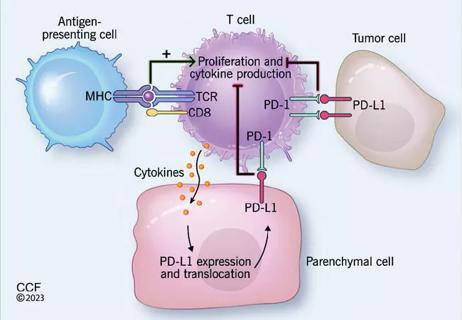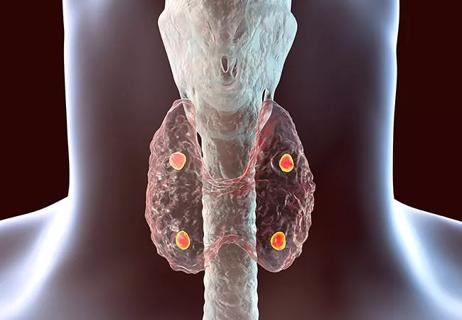New findings provide clearer cutoffs for disease management

Results from a recent study indicate that contemporary risk of adrenocortical carcinoma (ACC) based on size in adrenal incidentaloma (AI) may actually be less than the recommendations in current management guidelines. The retrospective study appears in Annals of Surgery.
Cleveland Clinic is a non-profit academic medical center. Advertising on our site helps support our mission. We do not endorse non-Cleveland Clinic products or services. Policy
Adrenal incidentaloma occurs in around 4.4% of patients undergoing abdominal computed tomography (CT). Although ACC is rare and has an incidence of 2 per million, the prognosis of metastatic ACC is grim and must not be missed. However, adrenalectomy is associated with a morbidity rate of between 4.7% and 8.4%. When selecting patients for adrenalectomy, the risks and benefits must be carefully considered due to the high mortality rate of ACC against the high morbidity rate of the procedure.
“In most historical guidelines, the cutoff to predict cancer regarding size has been 4 centimeters,” says Eren Berber, MD, an endocrine surgeon in Cleveland Clinic’s Center for Endocrine Surgery, and lead author of the study. “In this study, we did a multivariate analysis and determined the best cutoff to predict adrenal cancer was 4.6 centimeters. Another parameter that is used by experts to assess the risk of cancer is the density of the tumor on non-contrast CT scan. This was reported to be 10-15 in the literature, but we determined in our study that the optimal cutoff was actually 20.”
Presently, guidelines rely on literature that reports a 1.9% to 4.7% incidence of ACC. The risk for tumors is based on size and has historically predicted a 2%, 6% and 25% ACC risk for tumors < 4 cm, 4 to 6 cm and > 6 cm, respectively.
The present retrospective study included patients with AIs between 2000 and 2017. An AI was defined as an unexpected discovery of an adrenal lesion on radiographic imaging that measured > 1 cm.
Through an analysis of 15,000 patients with adrenal disorders seen at the Cleveland Clinic between 2000 and 2017, 2219 patients were identified to meet the study inclusion criteria by having AI. Mean size of AIs at diagnosis was 2.8 cm and non-contrast density was 9.3 HU. Overall, 15.7% of AIs were hormonally active and 84.3% were inactive.
ACC rate in surgically removed AIs was 6.6%, with size-stratified rates of 0.8%, 3.5% and 21.4% for < 4 cm, 4 to 6 cm and > 6 cm, respectively. When stratified by size for the whole cohort, ACC rates were 0.1%, 2.4%, and 19.5% for lesions < 4 cm, 4 to 6 cm and > 6 cm, respectively. ACC risk in AIs with Hounsfield densities of < 10 HU, 10 to 20 HU and > 20 HU was 0%, 0.5% and 6.3%, respectively. The optimal size cut-off for ACC in AI was 4.6 cm. ACC risks by Hounsfield density were 0%, 0.5% and 6.3% for lesions of < 10, 10 to 20 and > 20 HU, with an optimal cut-off of 20 HU to diagnose ACC.
“We also emphasized the importance of hormonal testing in patients,” says Dr. Berber. “Approximately 40%-80% of the patients with primary adrenal cancer produce excess hormones. For that reason, we started our algorithm with the hormonal workup because if it’s positive, you already identify a number of those patients that are producing the hormones.”
Looking ahead, Dr. Berber believes the next steps in terms of the research are to focus on the follow up of patients with incidental adrenal tumors who were managed non-operatively. Dr. Berber and the research group have created a registry of patients and hope to continue building it up with more data to direct future studies.

Incidence, outcomes and management

Cleveland Clinic endocrinologists work to identify protocols for improving care

Cleveland Clinic’s Endocrinology & Metabolism Institute is working to offer novel opportunities and therapies for diabetes and kidney disease

New findings indicate the importance of achieving sufficient sleep levels in regard to personal glucose targets

A recent study evaluates the correlation between preoperative calcium and parathyroid hormone values as predictors of gland volume and multi-gland disease

A look at how to asses hCG elevation

As the diet’s popularity rises, certain considerations need to be taken when recommending it for patients with Type 1 diabetes

Findings suggest that the effectiveness of interventions may depend more on the frequency and delivery methods of the intervention rather than who is delivering the intervention